

Altha had lived in close proximity to the vast expanse of the Great Smoky Mountains for nearly half a century. Over these years, she had grown accustomed to the occasional sighting of bears meandering through her yard in Wears Valley. The 90-year-old woman had developed an intimate understanding and respect for these creatures, cherishing the privilege of coexisting with them.
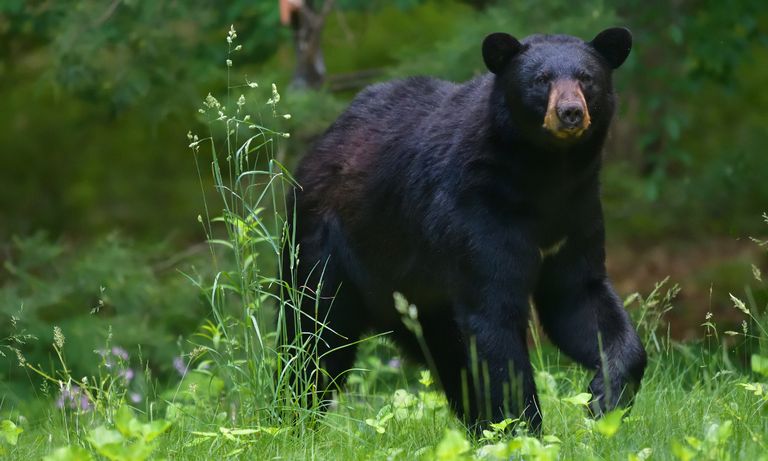
However, one day, she encountered a bear that did not align with the previous passive sightings she had experienced. This specific bear exuded an aura that was noticeably different, and Altha could feel it. This encounter felt unfamiliar and unnerving, unsettling her in ways her previous bear interactions had not.
In June 2022, the tranquility of Altha's surroundings was interrupted by a familiar yet distinct sight. She recognized this particular bear, or one eerily similar, from a past encounter. Despite the familiarity, there was an air of unease. This encounter felt different, sparking a sense of caution in her.

Though Altha had always acted with caution during past bear sightings, something about this encounter felt different. However, she remembered her previous actions that had kept her safe and tried to replicate them, understanding the imperative nature of her actions around these magnificent creatures.
Through her many years living close to the wilderness, Altha had established certain protocols to ensure the safety of both herself and the wildlife. One such precaution involved ensuring her bird seed was positioned out of reach from any potential wildlife visitors. This practice helped maintain a safe distance between Altha and the wildlife.

Moreover, Altha was always cautious about her waste disposal, especially food remnants that could act as an attractant for bears. But, like all of us, she had moments of oversight, occasionally neglecting this crucial safety measure, potentially jeopardizing her safety.
Matt Cameron, the spokesperson for the Tennessee Wildlife Resource Agency (TWRA), emphasized the risks associated with leaving out food. In his conversation with WVLT News, he elucidated how such actions inadvertently conditioned bears to associate humans with food, a dangerous connection that could catalyze aggressive encounters.
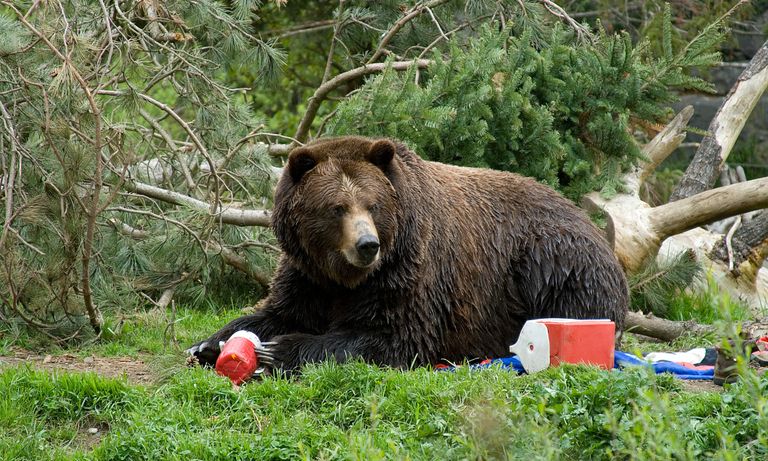
This correlation intensifies the likelihood of unsettling interactions, much like the one Altha was presently embroiled in. The continuous habit could pave the way for numerous dangerous situations, even if unintentional. Altha's encounter with the bear serves as a stark reminder of the consequences of inadvertent attraction.
Wears Valley, Altha's serene dwelling place, was recognized for its significant black bear population, with estimates suggesting a presence of around 1,500 of these formidable creatures. Their physical attributes only added to their awe-inspiring nature. The sheer number and imposing size of the bears made encounters like Altha's both fascinating and potentially risky.
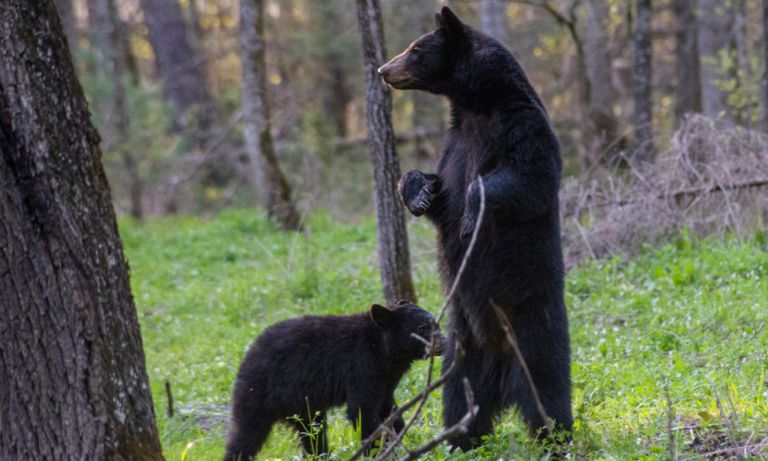
A mature black bear could stretch up to six feet in length and stand three feet tall, with females potentially weighing upwards of 100 pounds, especially during the summer months, precisely when Altha's unnerving encounter took place. The bears' size and strength added to the complexity of interactions between humans and these formidable creatures.
The TWRA has always been proactive in educating residents about safely coexisting with black bears. Their guidelines stress the importance of maintaining a respectful distance and refraining from feeding them. These measures are crucial to minimizing potential conflicts and ensuring both human and bear safety in bear-inhabited areas.

If, however, one inadvertently finds themselves in close proximity to a bear, the recommendation is to assert oneself without succumbing to the instinct of fleeing. This guidance stems from the understanding that bears, despite their imposing stature, are often more fearful of humans than we are of them.
Altha's prior interactions with bears had predominantly been non-confrontational. In most instances, the sight of her presence would send these creatures scurrying away, validating the widely-held belief that bears generally avoid human interaction. Her past experiences had given her a sense of security, which was put to the test in her recent bear encounter.

Altha drew solace from these past experiences, assuming they would grant her a certain level of safety during this new confrontation. She clung to the hope that her history with a seemingly identical bear would afford her some protection. However, the unpredictable nature of wildlife encounters can make even the most experienced individuals vulnerable.
Altha's memory journeyed back to a year prior, in 2021, when she had experienced a similar bear visit. Then, she had been outside, much like now. That bear had been accompanied by three cubs, mirroring her current visitor. Despite the stark similarities, the bear from yesteryear hadn't displayed any aggression. These previous peaceful encounters added to her sense of security.
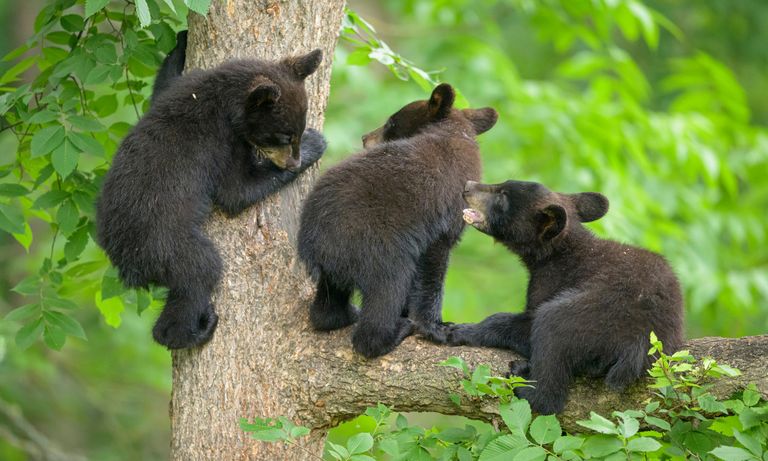
This past benign encounter, coupled with several other peaceful interactions over the years, had given Altha a sense of security, making her believe that her proximity to the bears wasn't necessarily a threat. Her trust in the bears' generally non-confrontational behavior had grown over time, but her recent encounter shattered that perception.
Over her extensive tenure in Wears Valley, Altha had discerned a steady increase in bear sightings around her property. Although most of these encounters had been uneventful, her peaceful coexistence with them had allowed her to indulge in simple pleasures, such as reclining on her porch swing, without fearing an imminent threat.

But the present situation was shaping up to be an exception to her otherwise peaceful trysts with the bears. The suddenness of the bear's appearance was what startled Altha the most. She had barely settled on her porch with her water when the massive creature materialized, almost magically.
The suddenness of the bear's appearance was what startled Altha the most. She had barely settled on her porch with her water when the massive creature materialized, almost magically. Her instincts immediately kicked in, urging her to rise. But the bear's rapid approach gave her little time to react, and before she could comprehend the situation, she was confronted by the colossal beast.

Her instincts immediately kicked in, urging her to rise. But the bear's rapid approach gave her little time to react, and before she could comprehend the situation, she was confronted by the colossal beast. The unexpected encounter left her in a vulnerable position, and the bear's behavior was still shrouded in uncertainty.
The immediate physical threat became apparent when the bear lunged towards Altha. The animal's motivations remained ambiguous – was it provoked by Altha's movement, or was there another underlying cause? As the bear drew nearer, Altha's heart raced, and she knew that her extensive experience with these creatures might not be enough to deter this aggressive bear.
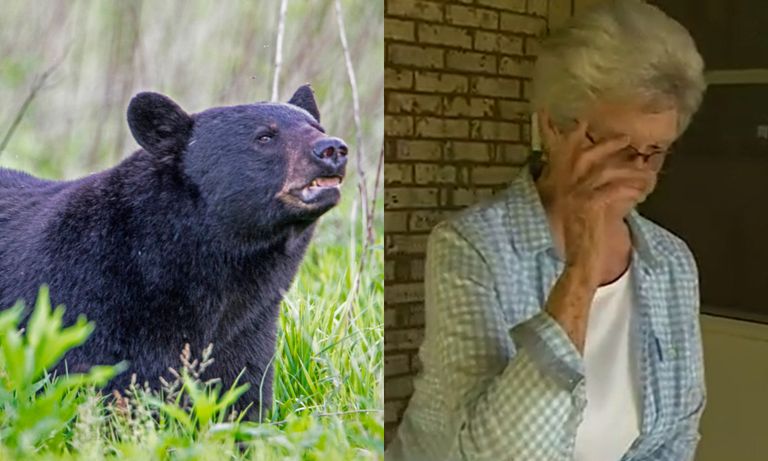
Regardless of the bear's intent, the very real danger to Altha was palpable. These creatures possess formidable strength, capable of inflicting fatal damage with a single swipe. As she faced this life-threatening situation, Altha realized that her usual encounters with bears, no matter how peaceful, had not prepared her for this life-and-death struggle.
By some stroke of luck, the bear's initial attack didn't result in a lethal blow, although Altha wasn't unscathed. The force of the bear's swipe left a gory laceration on one of her arms. In that dire moment, pain and panic surged through her, while the bear remained dangerously close.

It was then that she spotted it - a humble lawn chair not far from where she stood. Seizing this unexpected lifeline, she prepared to use it as her makeshift defense tool. With trembling hands, Altha raised the chair, ready to fend off the bear and protect herself.
Amidst the palpable tension and rising panic, Altha's mind raced as she confronted the immediacy of her dire predicament. The gravity of her decisions in this fleeting moment could mean the difference between safety and peril. The tick of the clock echoed in her ears, emphasizing the urgency of her situation.

Despite scanning her surroundings desperately, the stark realization hit her—she was without any immediate means to defend herself, making her feel all the more exposed and vulnerable. In that tense moment, it became clear that her odds of surviving this harrowing encounter were hanging by a thread.
Driven by desperation and the instinct to survive, Altha wielded the lawn chair as a makeshift shield, strategically positioning herself behind it. With remarkable determination, she engaged in a makeshift dance, pushing the chair towards the bear repeatedly. This makeshift barrier served as her only defense against the powerful and unpredictable creature.

In a turn of events that can only be described as miraculous, her tenacity paid off, and the bear eventually retreated. But this confrontation's aftershocks would continue to reverberate. The physical and emotional scars from this life-threatening encounter would stay with Altha long after the bear had disappeared into the wilderness.
The bear, though temporarily repelled, did not venture far. As Matt Cameron from the TWRA relayed, the bear had only migrated to the neighboring property. This proximity was a constant reminder of the precarious balance between humans and the wildlife that shared the landscape.
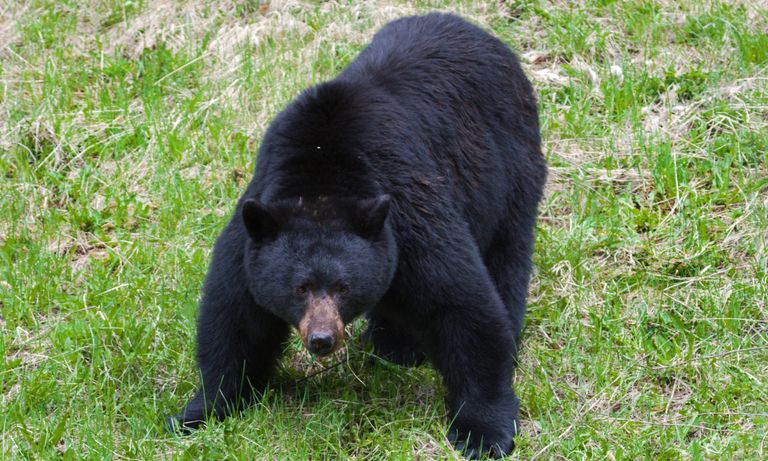
Here, its aggressive pursuit of human interaction persisted, culminating in a charge towards Altha's neighbor. This new confrontation would set the stage for the bear's tragic fate. The bear's behavior highlighted the complexities of coexisting with wildlife and the challenges of maintaining a peaceful harmony in an area shared by both humans and formidable creatures.
Altha's neighbor, unlike the elderly lady, was better prepared to confront the bear's aggression. The targeted individual managed to defend themselves using a firearm, incapacitating the bear before it could inflict harm. This unfortunate incident underscored the importance of understanding and adhering to guidelines for living harmoniously with wildlife.

This second aggressive encounter within a short span cemented the authorities' grim resolution regarding the bear's fate. With public safety in mind, the decision was made to euthanize the bear, a somber reminder of the complex dynamics in the coexistence between humans and wildlife.
Matt Cameron elucidated the stringent regulations in place in Tennessee regarding aggressive bears. Given the bear's consecutive hostile encounters, state guidelines mandated its euthanization. These events underscored the importance of responsible coexistence with wildlife, with the consequences of failure laid bare.

Cameron stressed that such decisions were not borne out of emotional impulses but stemmed from a structured policy. Relocating such bears wasn't an option, as it would only shift the problem elsewhere. Their approach prioritized the safety of both humans and wildlife.
Despite the tragic outcome, Cameron lauded Altha's response during her confrontation. He emphasized how her actions mirrored the TWRA's guidelines on bear encounters. Altha's brave efforts had inadvertently helped protect her community from further harm.

Her ability to assert dominance, make noise, and attempt to intimidate the bear was commendable. Cameron believed that her actions could very well have been the difference between life and death. Her courage and adherence to guidelines served as an example for others in bear-prone areas.
Altha's ordeal evoked a myriad of emotions, which she candidly shared with WVLT. Overwhelmed by gratitude for her survival, she couldn't help but acknowledge divine intervention, crediting her safety to providence. Her harrowing experience served as a reminder of the unpredictable nature of wildlife encounters.

Altha's bravery serves as a testament to human resilience and resourcefulness, offering valuable lessons for those who might encounter wildlife in unexpected circumstances. Moreover, experts like former Navy SEAL Clint Emerson further elaborate on measures to ensure safety during such encounters.
Observing wildlife in their natural setting is undeniably one of the most fulfilling experiences. There's an unparalleled joy in watching creatures interact within their pristine environments. It offers a rare glimpse into the beauty and intricacies of the natural world, fostering a profound connection with our planet.
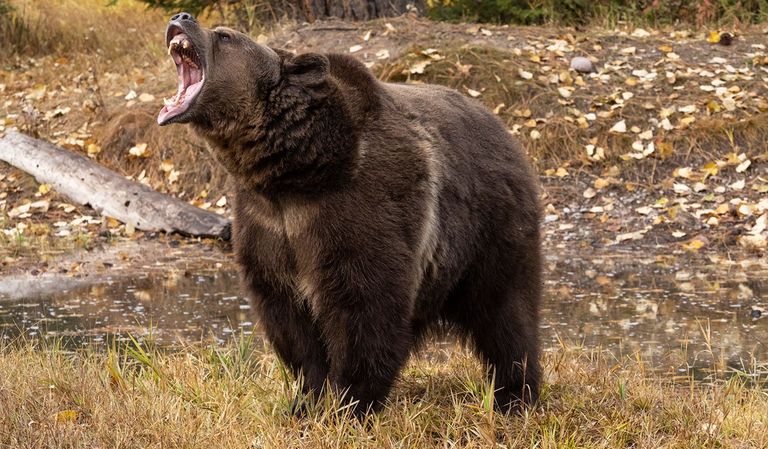
However, while these moments are exhilarating, there's an inherent risk involved. Wild animals, by nature, are unpredictable, and when those animals possess the potential to harm us, it’s crucial to exercise extreme caution. This delicate balance between fascination and safety underscores the importance of responsible wildlife observation.
When in the wilderness, it's imperative to recognize signs of danger, especially with large animals like bears. A bear exhibiting aggressive behavior will give certain cues: it might growl, stamp the ground with its huge paws, or display other warning signals. Ignoring these signs can lead to dangerous encounters, making education and awareness about wildlife crucial.
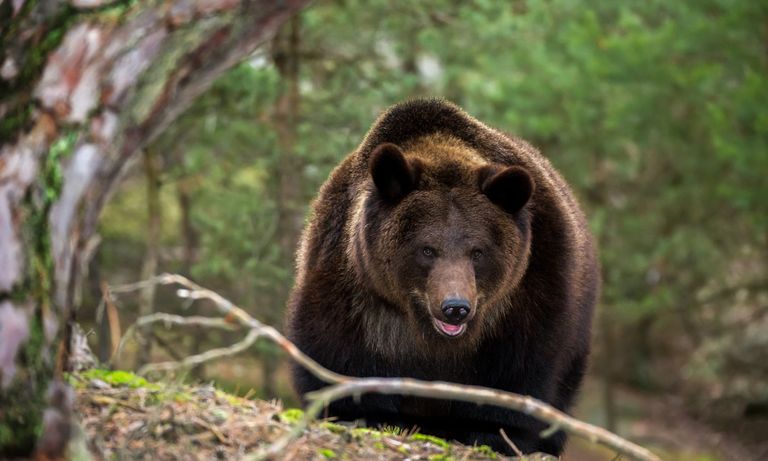
Alongside these indications, the bear might also drop its head and shift its ear position, signs that anyone in their vicinity should be keenly aware of. Being alert and knowing how to react in the presence of such animals can make a significant difference in your safety and the well-being of the wildlife.
Bear encounters, often rooted in a myriad of unpredictable circumstances, serve as a stark reminder of the unpredictable nature of the wilderness. When first confronted with human presence, bears often exude an aura of indecision, their reactions teetering on the edge of curiosity and caution.
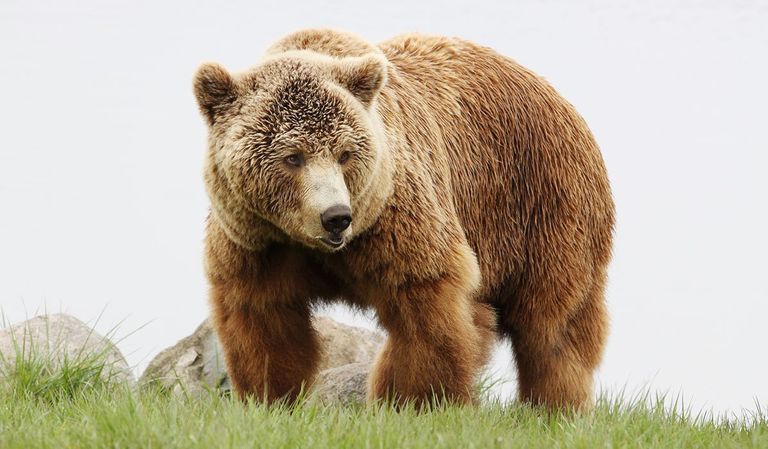
Yet, it's vital to recognize that this initial hesitancy can, without warning, shift to a more assertive stance, especially if the bear senses any danger or begins to see humans as a source of food. Drawing upon a wealth of firsthand experiences and deep understanding, Emerson's guidance offers an indispensable compass for navigating the complexities of such precarious encounters.
But where are these confrontations most likely? For nature enthusiasts, national parks provide a haven for exploration. Renowned locations such as Yosemite and Yellowstone rank among America's top natural treasures, offering breathtaking vistas.
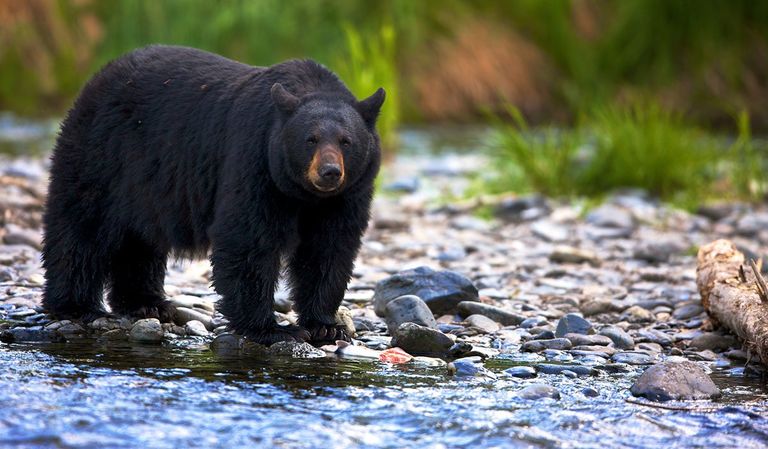
The beauty of national parks often comes hand in hand with the potential for wildlife encounters, including those with bears. Bears, as magnificent creatures, are an integral part of the natural ecosystems found in these parks. Visitors must remain aware of this and be prepared for the possibility of encountering bears during their exploration.
Within the expansive and diverse landscapes of North America, three primary bear species command the attention of outdoor enthusiasts and residents alike: brown bears, black bears, and the formidable polar bears. Polar bears, with their majestic white coats, are specifically adapted to the chilly domains of the far north, remaining largely isolated in their icy realms.
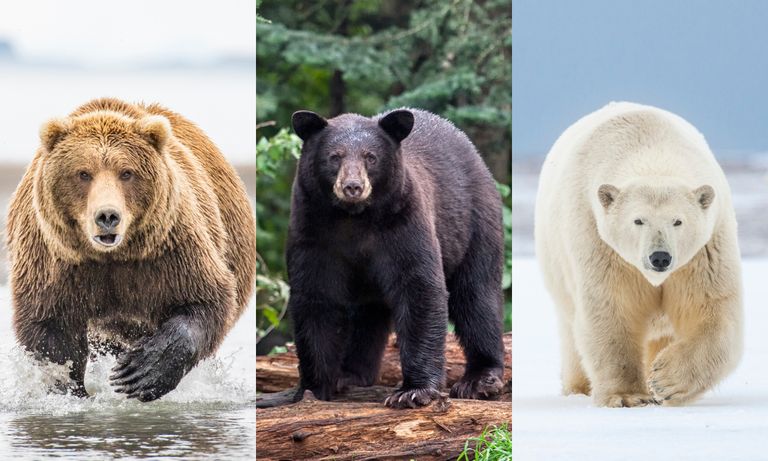
On the other hand, brown and black bears have a more widespread distribution, roaming diverse habitats from forests to mountains across the vast stretches of the continent. Consequently, for the majority of Americans who engage with the wilderness, the likelihood of crossing paths with either a brown or black bear is significantly higher, warranting a keen understanding of their behaviors and habitats.
Black bears exhibit a notable adaptability, allowing them to thrive in a variety of terrains across the United States, from the Smoky Mountains of Tennessee to the dense forests of Alaska and the scenic landscapes of North Carolina. This adaptability has also seen them make renowned national parks such as Yellowstone and Yosemite their home.
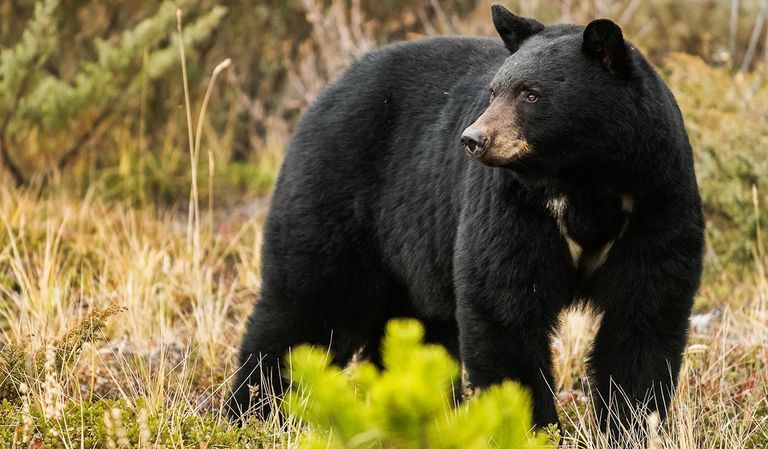
While their formidable size, which can be quite impressive, may instinctively urge many to maintain a safe distance, it's essential to remember that black bears often exhibit a relatively docile disposition, making aggressive encounters less likely under normal circumstances.
The impressive stature of a mature black bear, which can easily weigh in at around 500 pounds, might invoke fear in the uninitiated. Yet, despite their imposing presence, many would be surprised to learn that these creatures predominantly favor a herbivorous diet, munching on delicacies such as nuts, berries, and fruits.
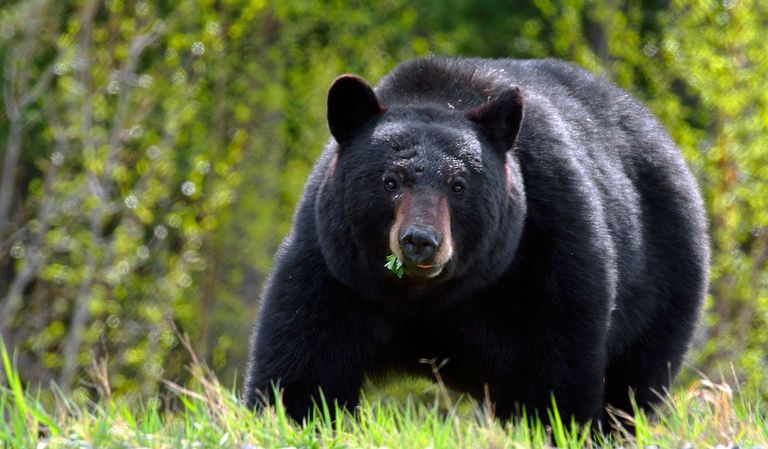
Emerson's 2016 insights into the nature of black bears provided a nuanced understanding, emphasizing their generally non-threatening behavior and shedding light on their unique dietary preferences.
Emerson's decorated career as a Navy SEAL spanned over two decades, during which he acquired a wealth of knowledge and expertise in survival skills. Upon retirement, Emerson embarked on a new mission to share this knowledge with the world. In 2016, he penned "100 Deadly Skills: Survival Edition," a comprehensive guide that covers various survival scenarios.
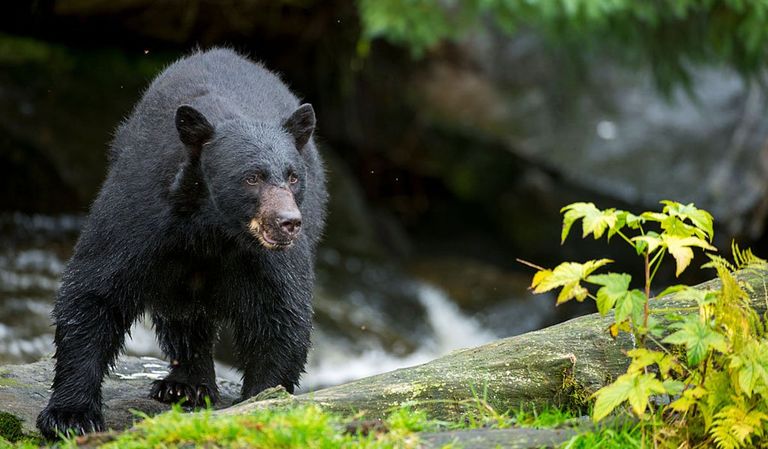
Oliver's tips about meeting bears give valuable advice to people going to places where bears live. He stresses how important it is to know, respect, and be ready. This knowledge can keep people safe when they're in bear areas. Oliver's guidance is a big help for anyone who might come across these wild creatures, emphasizing that understanding, showing respect, and being prepared are key to staying safe in bear territory.
Elaborating on black bear encounters in his influential book, Emerson offers a fresh perspective, opining, “Encountering a black bear on a mountain trail should be considered more of a serendipitous event than a perilous one.” He elucidates that, in the grand hierarchy of bear aggression, black bears are generally more docile, especially when juxtaposed with their polar and brown counterparts.
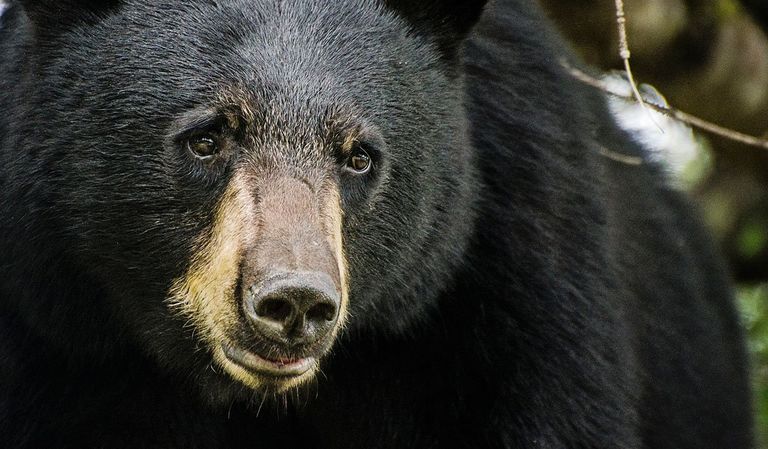
However, he emphasizes that any wild creature, when threatened, can display unpredictability, urging readers to always exercise caution and respect. Respecting their space and following safety guidelines is essential for both human and animal well-being.
While black bears might be more amenable, brown bears have a reputation for unpredictability. Their territorial presence in national parks like Yellowstone and Glacier National Park underscores the need for visitors to exercise caution and adhere to safety guidelines when exploring these remarkable but wild habitats.
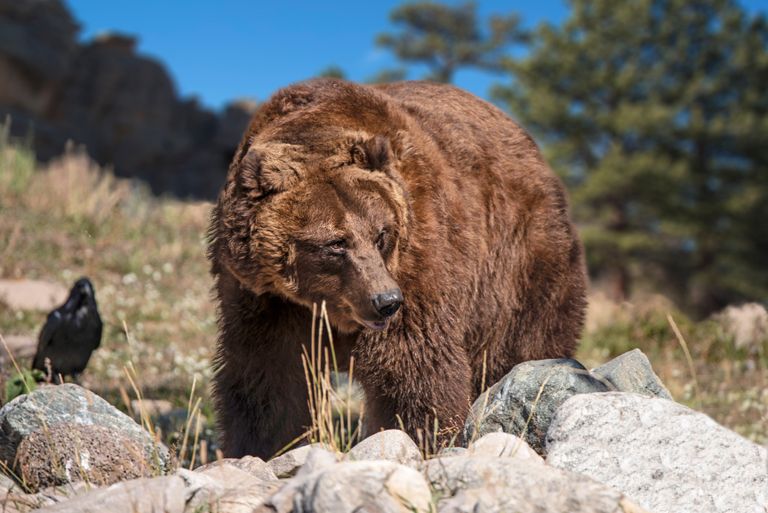
Brown bears are commonly found in places like Alaska and the vast, wild areas of Canada. It's not unusual to come across them in these regions. While you might not see them in the lower 48 states as much, they are very present in the rugged Alaskan terrains and the expansive Canadian wilderness. So, it's quite normal to encounter them in those parts.
Coastal brown bears, also known as brown bears, are known for their impressive size, with some individuals weighing up to a remarkable 1,000 pounds. These massive creatures are often associated with coastal regions and their abundant food sources. Their size can vary greatly, with individuals in inland areas typically being smaller than their coastal counterparts.
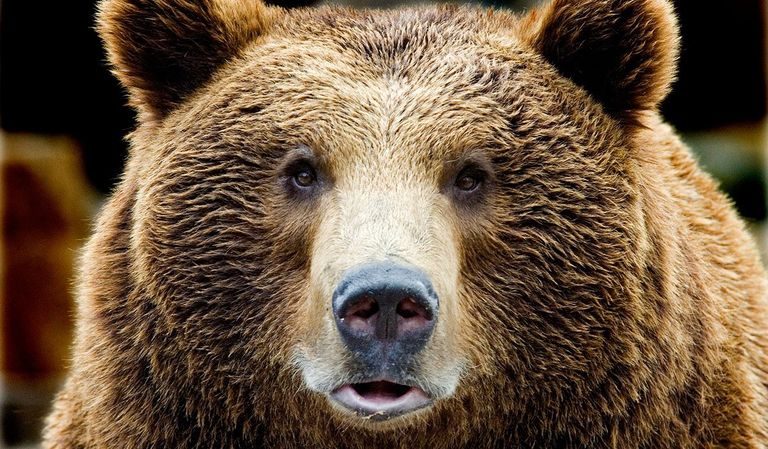
These magnificent creatures predominantly stick to coastal regions, where the abundance of food, especially salmon, supports their massive size. This diet, rich in protein and nutrients, plays a significant role in their massive size, making coastal areas their primary habitat. The access to such plentiful food sources allows these magnificent creatures to thrive and grow to their remarkable proportions.
Grizzly bears, as the inland subset of brown bears, are indeed slightly smaller in size compared to their coastal counterparts but are still awe-inspiring with the potential to weigh up to 700 pounds. Their physical stature, while slightly lighter, is no less impressive, and they have adapted to thrive in inland environments, where their diet and lifestyle may differ from coastal brown bears.
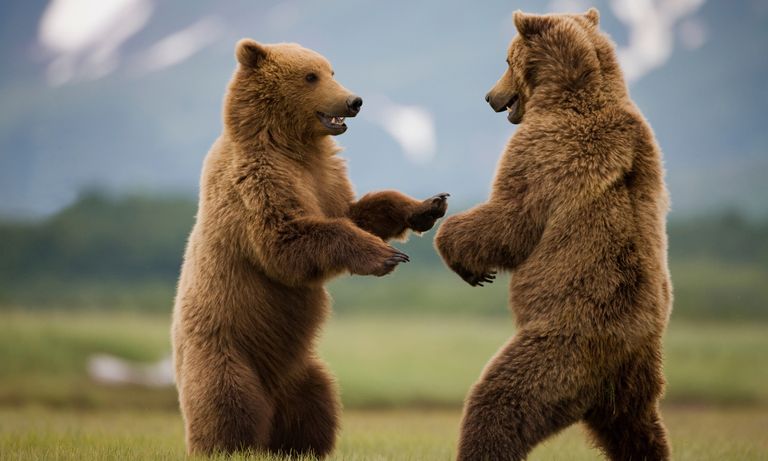
When upright, a grizzly can easily tower at over six feet, making its sheer physical presence something to behold. But their distinctive physical attributes don't end there. Grizzlies are also known for their prominent shoulder hump, a feature that distinguishes them from other bear species and adds to their formidable appearance.
The grizzly bear's pronounced muscular hump around its shoulders is indeed a testament to its raw power. This adaptation, along with their razor-sharp claws and powerful jaws, equips grizzlies for their omnivorous diet. Their diet is incredibly diverse, ranging from berries and plants to fish and mammals, showcasing their adaptability and hunting prowess.

Encounters with majestic creatures like bears should be approached with a blend of admiration for their beauty and an unwavering commitment to ensuring the safety of both humans and the wildlife. Respecting their natural habitats and adhering to safety guidelines is essential for harmonious coexistence.
Although grizzly bears, akin to black bears, don't often instigate unprovoked confrontations, they have a temperament that can be deemed capricious. Any display of aggressive posturing or perceived threats in their vicinity can quickly turn a benign encounter sour.
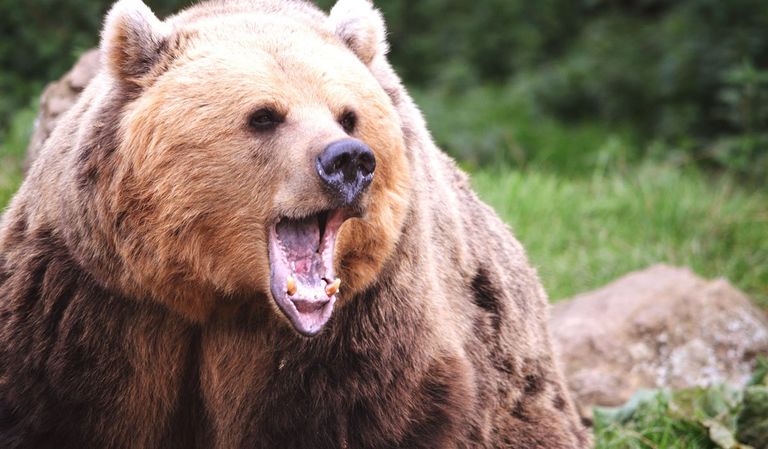
Among different bear encounters, polar bears are distinctive. This is mainly because of their special adaptations to the icy environment and their unique ways of behaving. They live in a very different place and have learned to survive in those cold conditions, which sets them apart from other bears. Their behaviors and habits are specially suited to the extreme environments of the polar regions.
The polar bears, reigning supreme in the Arctic, dominate the icy expanses within the Arctic Circle. These colossal creatures can reach awe-inspiring weights of up to 1,500 pounds, making them true giants of the bear family.
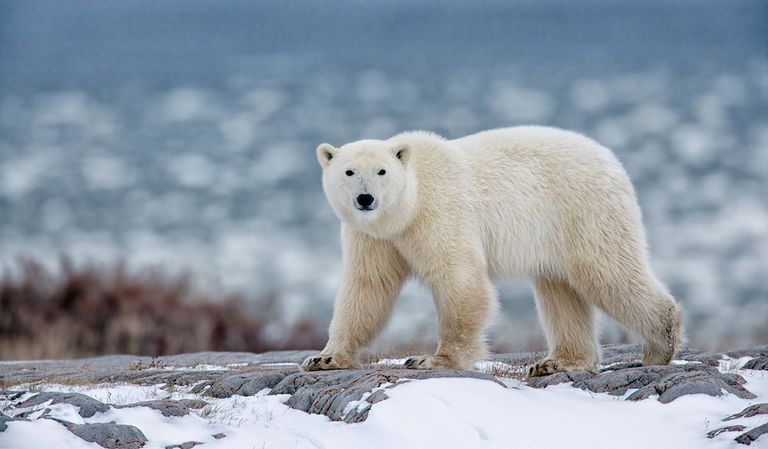
In their frozen habitats, polar bears primarily subsist on a carnivorous diet, with seals as their favored prey. The harsh Arctic conditions and limited vegetation options make these marine mammals a vital source of sustenance for these mighty creatures.
Polar bears have had relatively fewer interactions with humans throughout history, primarily due to their remote Arctic habitats. Unlike brown and black bears, which have often shared ecosystems with human populations, polar bears have maintained a degree of separation from people.
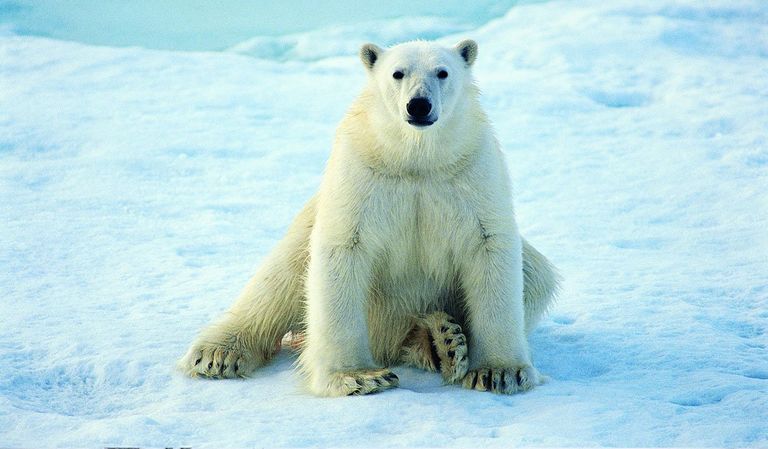
Polar bears, when they see a person, might not know what to think because they've never seen a human before in their icy home. They might see the person as something to eat because they don't understand that humans aren't food. This can make meetings with polar bears very dangerous because they might see humans as prey.
Emerson, in his comprehensive book, paints a vivid picture of polar bear behavior, articulating, “The polar bear's world is one of perpetual hunt. Unlike their temperate cousins, polar bears have an innate drive to track and, if the opportunity arises, hunt humans in their icy dominion.”
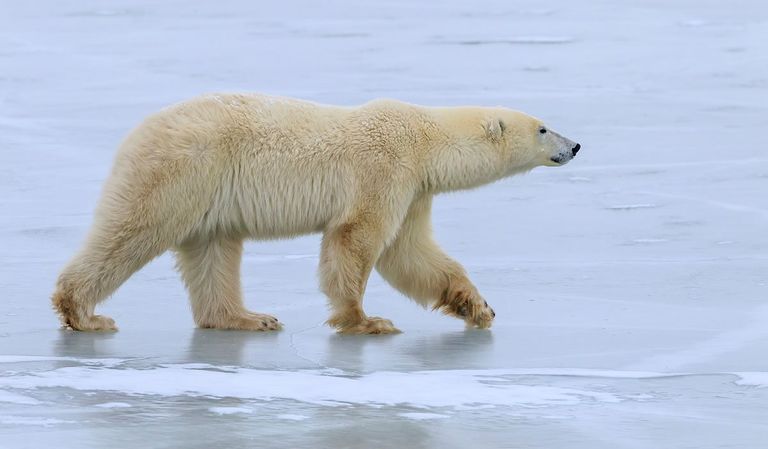
Polar bears are the strongest and most skilled predators in the Arctic. They are at the very top of the food chain, which means they are in charge of that environment. Because of this, it's extremely important to treat them with a lot of respect and be very careful around them. Their power and natural instincts make them quite different from other animals in the Arctic.
In a chilling commentary, Emerson further states, “[A single swipe from a polar bear] can spell the end, eviscerating its prey with ease.” However, a broader perspective reveals that fatal bear encounters, regardless of species, remain relatively rare events.
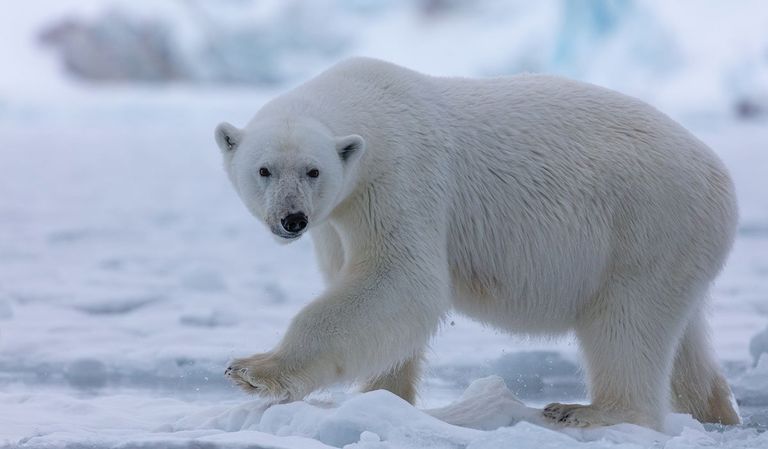
In Yellowstone National Park, where there are different types of bears, there have been only eight people who died in bear incidents since it was created in the 1800s. This shows that, even though bears can be dangerous, fatal encounters with them are rare. Yellowstone is a place where people and bears share the land, and most of the time, they don't hurt each other.
Polar bears typically inhabit remote and harsh Arctic environments where human populations are sparse. Unlike brown and black bears, which have had more historical interactions with humans, polar bears are less accustomed to human presence. As a result, when they do encounter humans, they might not have the same level of familiarity and can potentially perceive them as a source of food.

When polar bears see a person for the first time, they might not know what it is because they've never seen a human before. They might think the person could be something to eat because they don't understand that humans aren't food. This makes encounters with polar bears very risky because they might see people as something they can catch and eat.
Emerson, in his comprehensive book, paints a vivid picture of polar bear behavior, articulating, “The polar bear's world is one of perpetual hunt. Unlike their temperate cousins, polar bears have an innate drive to track and, if the opportunity arises, hunt humans in their icy dominion.”

Polar bears are the strongest and best hunters in the Arctic. They are at the very top of the food chain, which means they're the boss in the Arctic. That's why it's very important to treat them with a lot of respect and be very careful around them. Because of their power and the way they hunt, you should always be cautious when you're near polar bears.
In a chilling commentary, Emerson further states, “[A single swipe from a polar bear] can spell the end, eviscerating its prey with ease.” However, a broader perspective reveals that fatal bear encounters, regardless of species, remain relatively rare events.

Think about Yellowstone National Park, where different kinds of bears live. In all the time since it started in the 1800s, there have only been eight times when people died because of bears there. This helps us see that, even though bears can be dangerous, it's not very common for people to get hurt by them. In Yellowstone, both people and bears share the land, and most of the time, they don't hurt each other.
However, Emerson underscores an important trend in recent years. He notes, “As conservation efforts have successfully bolstered bear populations across North America, human-bear interactions have seen a noticeable uptick.” Particularly, the resurgence in black bear populations has resulted in increased sightings, hinting at the nuanced relationship between conservation, bear populations, and human encounters.
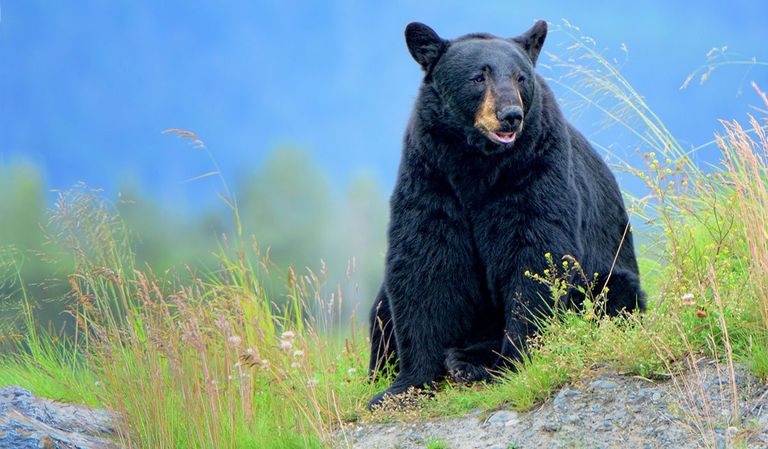
The number of black bears has been going up, and people are seeing them more often. This shows that how we take care of these bears and how many there are can affect how often people run into them. It's a complicated relationship between saving these bears, how many there are, and how often they come across people.
Despite the awe-inspiring nature of bears and the potential risks associated with encountering them in the wild, bear attacks are indeed rare. The odds of being involved in a bear attack are relatively low, with statistics suggesting that the risk is around one in 2.1 million. This means that everyday activities and various other situations often present greater and more common risks to individuals.
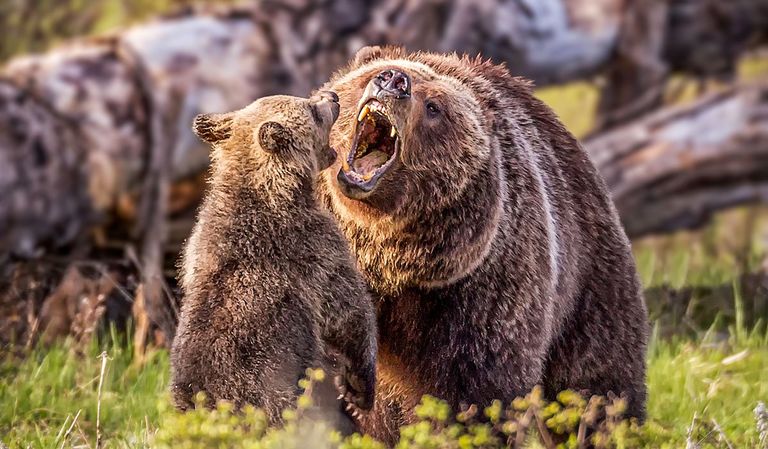
However, specific activities, like bow-hunting in Montana's mountains or backpacking in Yellowstone, can substantially elevate the chances of a lethal confrontation.” This information underscores the importance of awareness and preparedness in bear territories.
Venturing into the wilderness is an exhilarating experience, often made memorable by the potential sightings of wild animals in their natural habitats. Bears, in particular, are a majestic sight but come with their own sets of challenges.
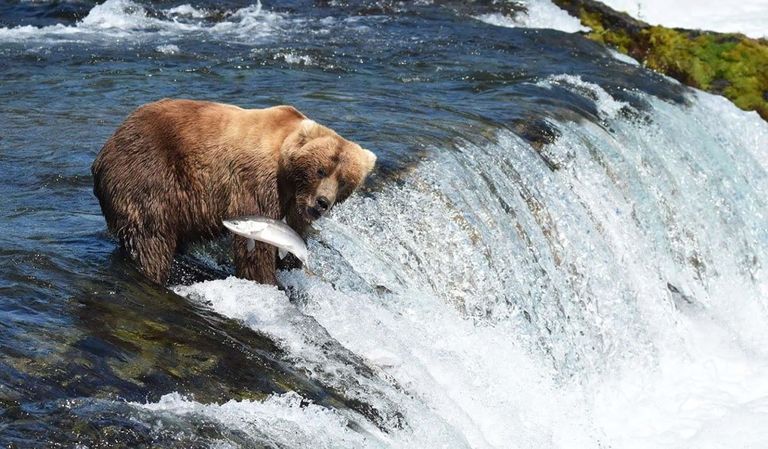
While being in the midst of nature is captivating, one should also be mindful of the risks posed by these creatures, especially near water sources. Streams, rivers, and other water bodies can be prime locations where bears hunt or quench their thirst. Hence, extra caution should be exercised when traversing these areas.
According to experts and wildlife enthusiasts, there are certain preventative measures that can reduce the chance of an undesirable encounter. When exploring territories known for bear activity, it's always a good idea to travel in groups.
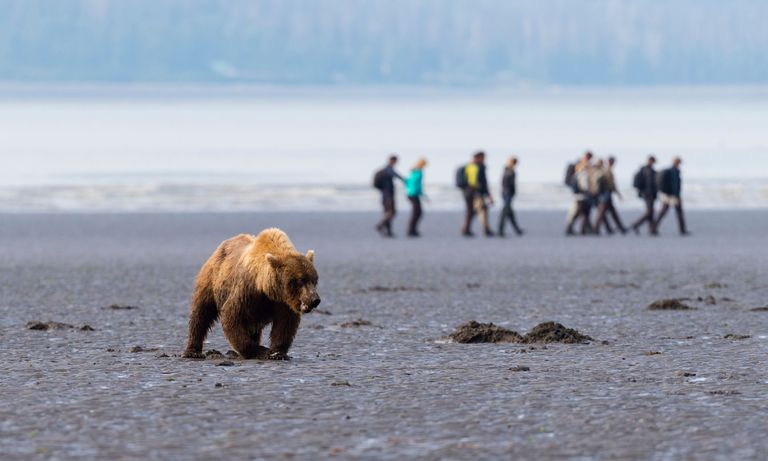
Larger gatherings tend to deter bears from approaching. Alongside this, being vocally active or making deliberate noises helps alert bears to human presence, minimizing the surprise factor. Silence, in this case, is not golden; the less noise you make, the higher your risk.
Camping under the stars might sound like a dream, but it also requires thoughtful planning, especially where food is involved. The aroma of freshly cooked meals can be an irresistible invitation for bears.
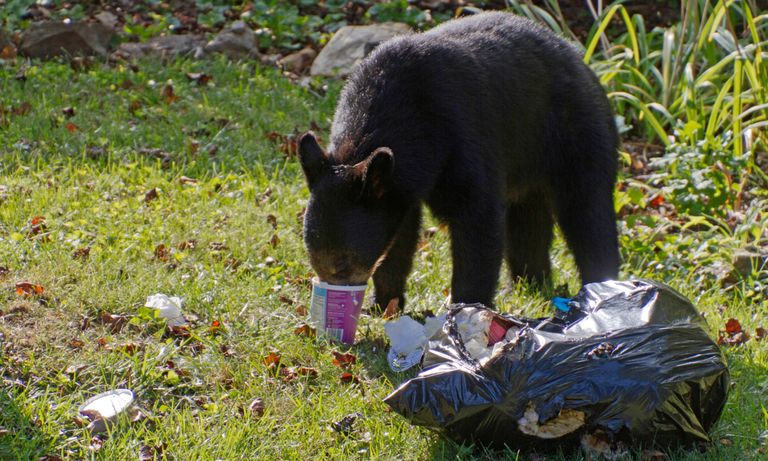
Emerson, in his insightful book, underscores the importance of certain precautions to reduce bear attractants. His guidelines, born out of research and experience, provide an invaluable resource for campers and nature enthusiasts.
Elaborating on the olfactory prowess of bears, Emerson emphasized how vital it is to minimize the scent trail left behind. "Their sense of smell is unparalleled. Hence, while camping, always store your food by double-bagging and hanging it away from sleeping areas.
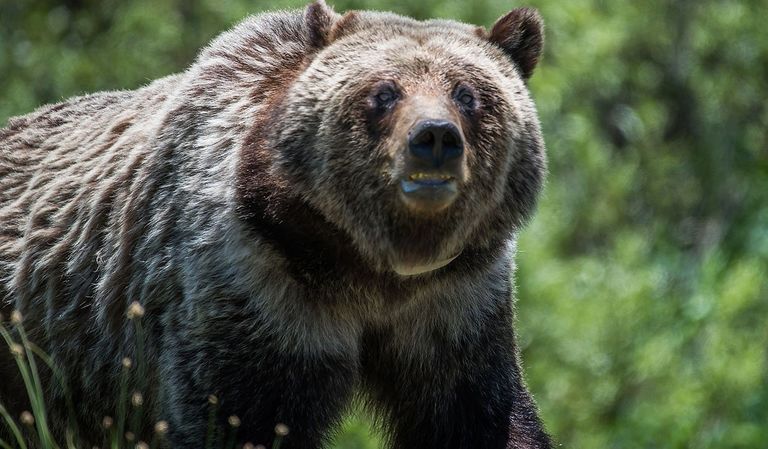
Also, remember to keep a good distance from spots where you see signs of bears like their poop or footprints. This advice, even though it's simple, is really important to make sure you stay safe when you're out in the wild. It's one of the most basic things you can do to stay protected during your time in nature.
Additionally, other smell sources, often overlooked, can also act as lures. Items like toothpaste, soaps, and even the clothes one cooks in can retain smells that might intrigue a bear.
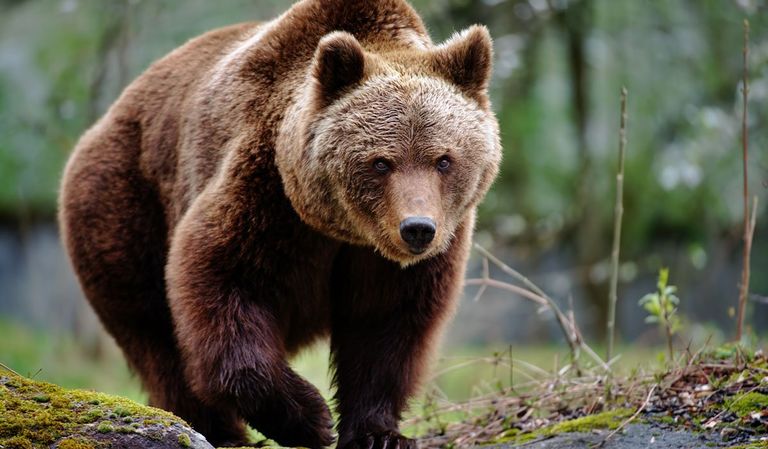
"It's smart to keep things that smell with your food and put on different clothes after you cook," Emerson recommended. Doing this makes it much less likely that a bear will smell things and come close. It's a good way to reduce the chance that a bear will pick up your scent and come near you when you're in the wilderness.
Despite taking these precautions, one can never be too safe. It's always better to be equipped with protective tools, like bear sprays. These are considered more effective than firearms in deterring a bear without causing it harm.
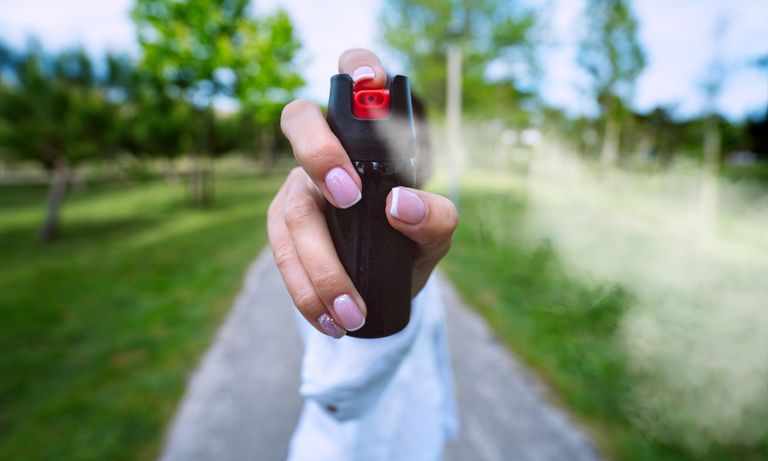
Emerson believes that bear sprays work, and he explains how to act if a bear gets too close. If a bear comes near you, it's a good idea to use bear spray to keep it away. Emerson gives advice on what to do in this situation, which can help keep you safe. He believes in the effectiveness of bear sprays and shares tips on how to handle close encounters with bears.
Detailing on the do's and don'ts, Emerson explained, "In case of a close encounter, make yourself appear larger by waving your arms and create a commotion. Such actions can cause hesitation in the bear or even make it retreat.
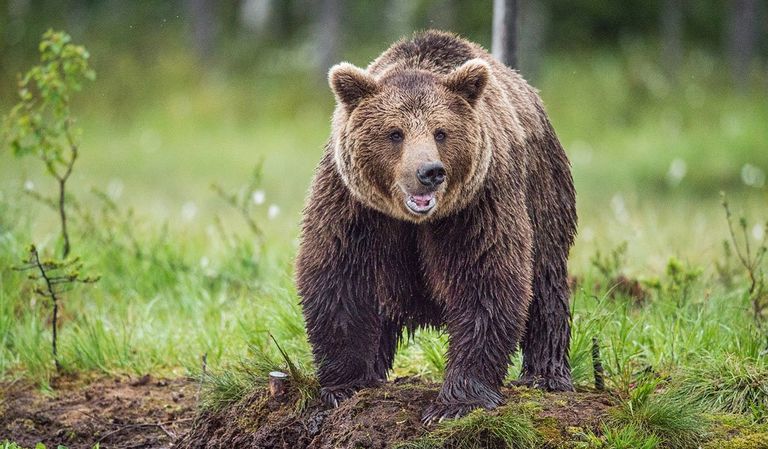
But if the bear starts to run toward you, be prepared with your bear spray and use it when the bear is about 40 feet away. If you have a gun, aim it under the bear's chin. This is what you should do to defend yourself and scare the bear away if it gets too close. Be sure to know how to use your tools to stay safe around bears.
In the intricate dance of wilderness encounters, bears, just like humans, have developed their own set of behavioral nuances. One such intriguing behavior observed among bears is what wildlife experts often refer to as a "bluff charge." This is not an overtly aggressive move, but rather a strategic approach by the bear to gauge the potential threat posed by the intruder in its territory.
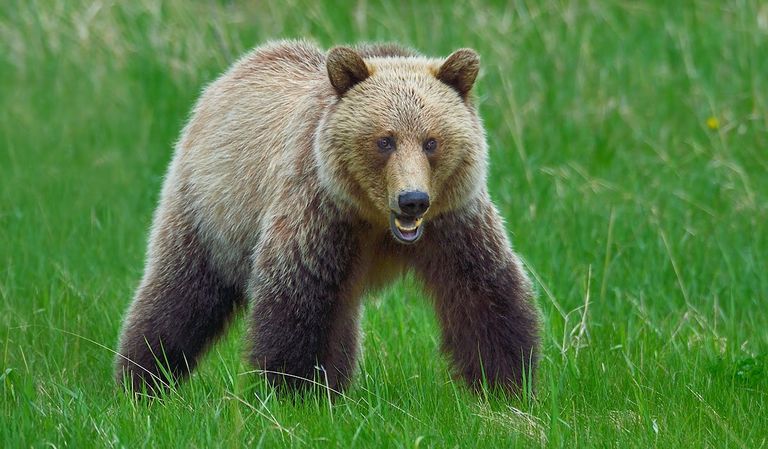
When faced with such a seemingly intimidating gesture, it's of paramount importance for the person to remain steadfast, keeping a cool head. Succumbing to the primal instinct to either flee or retaliate could exacerbate the situation. Instead, by standing still and maintaining a non-threatening posture, one communicates a lack of aggressive intent. This, in many cases, allows the bear to complete its assessment and, finding no immediate threat, opt to disengage and retreat from the vicinity.
Nature, with all its beauty, carries an innate unpredictability. When confronted with a wild creature like a bear, the thin line between a bluff charge and a genuine attack can blur, plunging you into immediate danger. In these grave moments, one's survival instincts are tested to their limits. If the unthinkable happens and you find yourself pinned down or toppled over by the bear, quick thinking and decisive action are paramount.
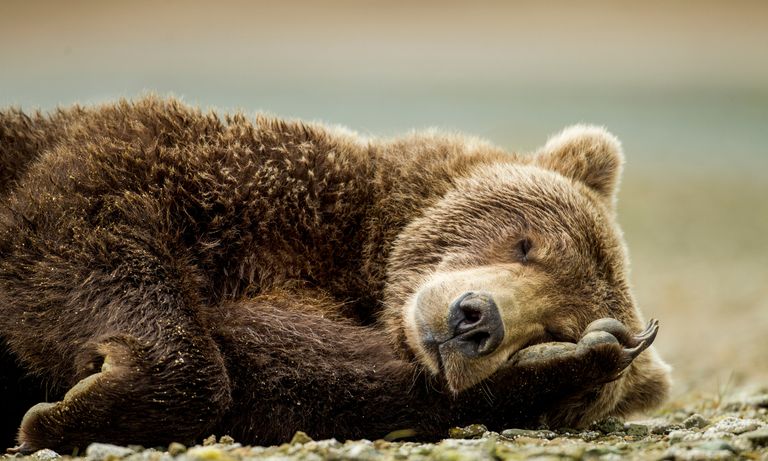
Many wilderness experts advocate for the "play dead" approach, a counterintuitive yet often effective tactic that might convince the bear that you're no longer a threat. By portraying yourself as harmless, the hope is that the bear might lose interest and desist from further aggression.
Emerson, in his vast repertoire of wilderness knowledge, breaks down this strategy in more detail. "In the event of an actual attack," he elaborated, "playing dead isn't just a whimsical suggestion. Most bear experts concur on its efficacy.
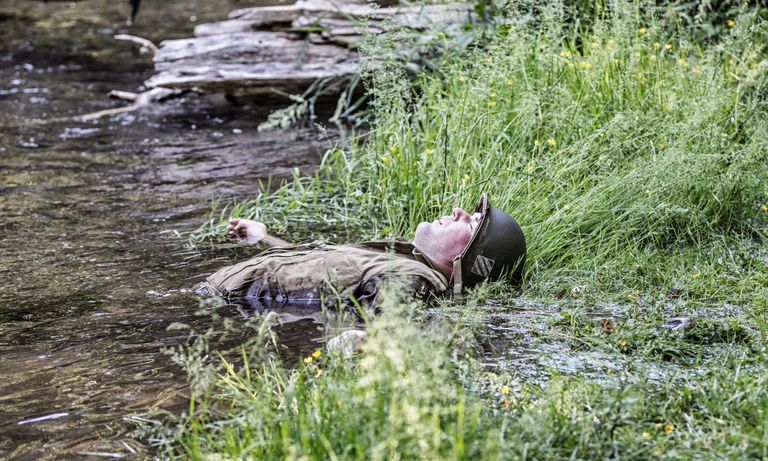
The underlying principle is to communicate to the bear that its threat has been neutralized and that you are not a danger. A practical way to adopt this posture is to lie flat on your stomach, clasping your hands behind your neck, thereby shielding vital areas."
The testament to the success of this strategy lies in its success rate. Emerson cited, "An overwhelming majority of times, almost 75% according to some studies, playing dead has deterred the bear from continuing its assault."
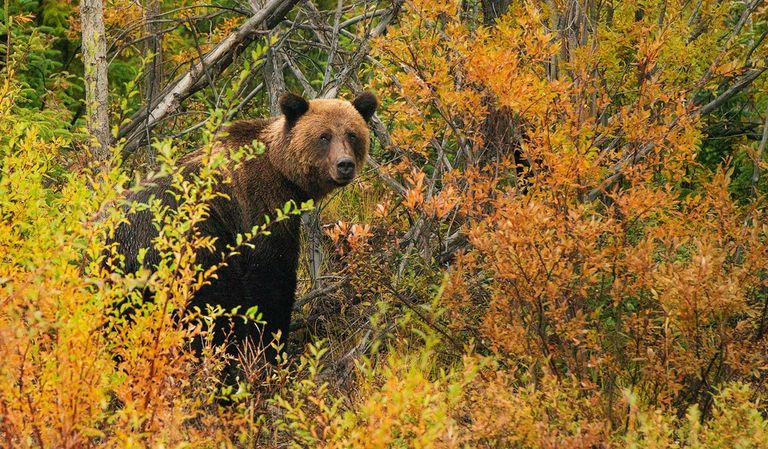
He also suggested, "In some cases, if you're in danger, you can curl up like you're in a ball, like a baby in its mother's belly. Cover the back of your neck with your hands; this can be a slightly different but still a good way to protect yourself." In some situations, it's another option to keep yourself safe if you can't use bear spray or a weapon.
In the vast wilderness, spotting a bear while there's still considerable distance between you can provide a fleeting moment of advantage. Yet, how one reacts in that split second can set the course for the impending encounter.
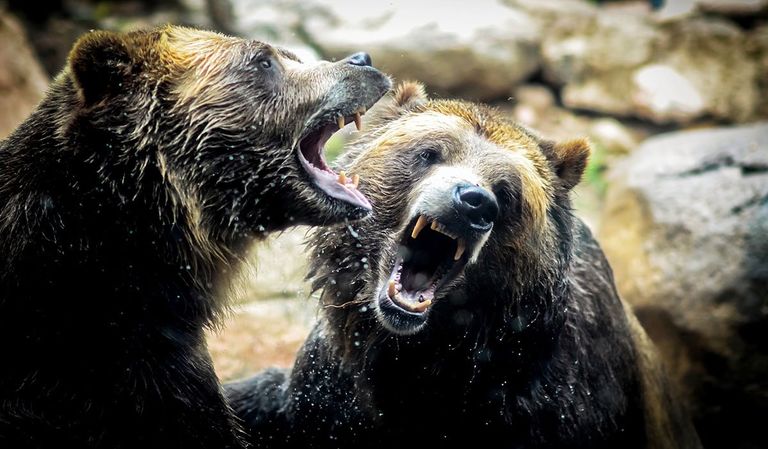
Sometimes, following your natural instinct to run away or fight might not be the best choice when dealing with a bear. Running away or turning your back on a bear can send a signal that you're either scared or challenging it. It's often better to use tools like bear spray, a weapon, or protective stances to keep yourself safe and avoid conflicts with bears.
In the vast realm of wilderness survival, Emerson's insights emerge as a beacon of knowledge. Drawing from his extensive experience and observations, he elucidated, "When unexpectedly coming face-to-face with a bear, the importance of maintaining one's composure cannot be stressed enough."
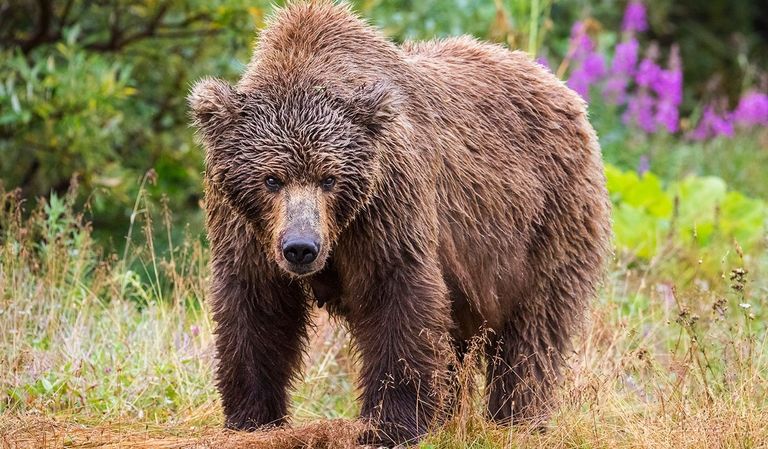
He warned against some instinctive actions, adding, "You must resist the urge to turn your back to the creature. Additionally, harboring any thought of outrunning the bear is a misjudgment. Given the animal's astonishing ability to sprint at speeds we can't match, attempting such a feat could lead to disastrous consequences."
While the importance of evading a potential threat like a bear is undisputed, the methodology of achieving this evasion becomes paramount. Offering a nuanced perspective on this, Emerson articulated, "The crux of safely increasing distance from a bear isn't simply about moving away. It's about how you move away."
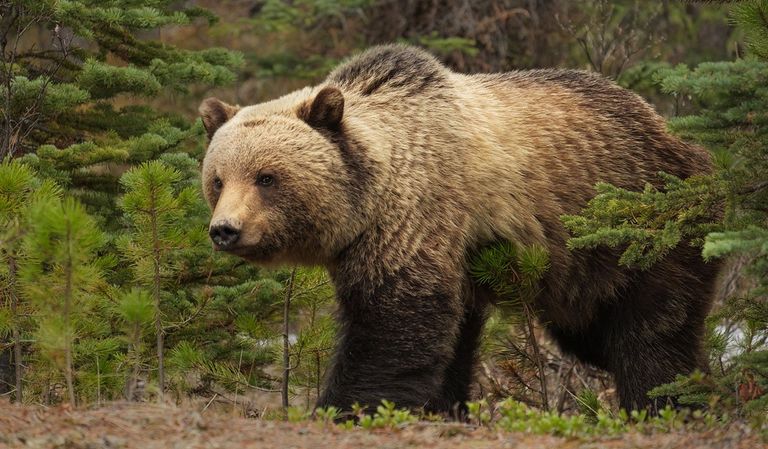
He further expanded on this by suggesting a strategic approach, stating, "Sidestepping offers a tactical advantage. This lateral movement, especially when paired with consistent eye contact and a vigilant observation of the bear's every reaction, significantly diminishes the risks associated with abrupt or forward retreats."
However, there may come a point when evasion isn't enough. In the unfortunate event of the bear's continued aggression, mounting a defense becomes non-negotiable. Whether it's employing whatever tools are on hand or, in dire circumstances, using one's own physical strength to target the bear's vulnerable spots, such as its eyes or snout, becomes critical.
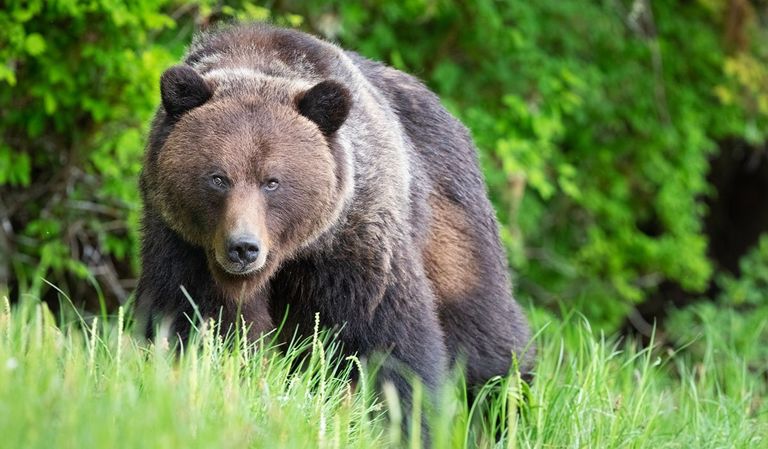
Emerson has a clear message: "If you're trapped and have no other choice, fight back. Use whatever you can find nearby - rocks, sticks, or even your own strength." In a situation where there's no escape and the bear is attacking, it's important to defend yourself with anything available. This could include throwing things at the bear or using your own physical strength to protect yourself from harm.
Taking such a confrontational stance may sound severe, but in certain situations, it can spell the difference between survival and catastrophe. Though continuous bear attacks are infrequent,
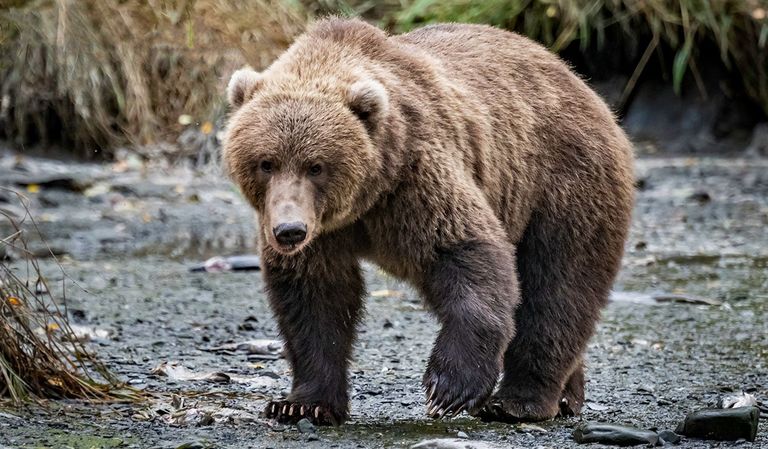
Bear encounters, when they do happen, can be very dangerous. But, as the earlier statistics show, these kinds of meetings are quite rare. Most of the time, people and bears don't run into each other, and things go smoothly.
Throughout the entirety of Emerson's extensive teachings and shared experiences, there remains a recurring theme that stands out unmistakably: the unparalleled importance of preparation. He fervently believes that being prepared forms the solid foundation upon which safety in the wilderness is built.
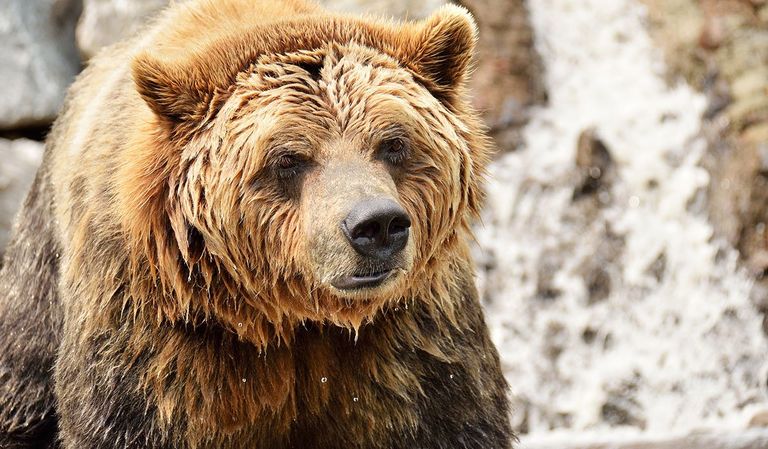
When one decides to venture into the vast expanses where bears and other wild creatures freely roam, they inevitably step into a world rife with unpredictability and inherent challenges. However, Emerson firmly asserts that with the right amalgamation of knowledge, understanding, and the appropriate tools at one's disposal, even the most daunting of these challenges can be successfully navigated and overcome.
Emerson strongly supports one prevention method more than others. He mentioned, "Although people may have different ideas about how to deal with each type of bear," There's a particular tactic he believes is most important for staying safe when you're around bears.
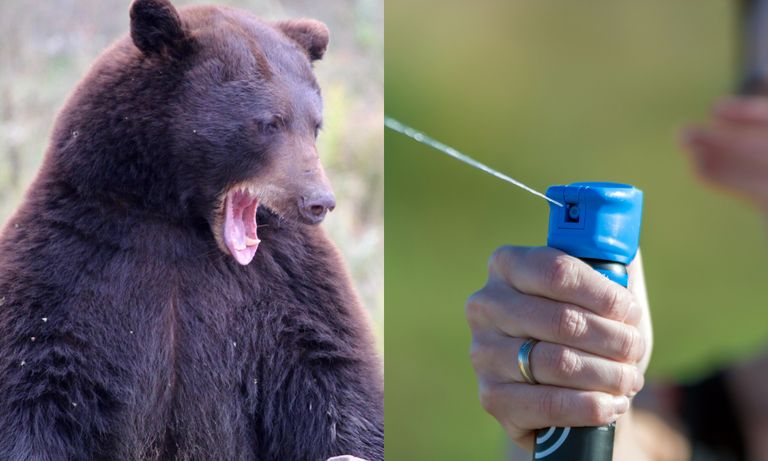
"Many people agree that pepper sprays work well. They are so powerful that even young people have used them successfully in emergencies." Pepper spray is a helpful tool that can keep you safe in difficult situations, and it can be used by almost anyone, even kids, if needed.
Concluding his deep dive into the realm of bear encounters, Emerson elucidated, "Due to their infrequent nature, bear attacks don't come with a one-size-fits-all manual.
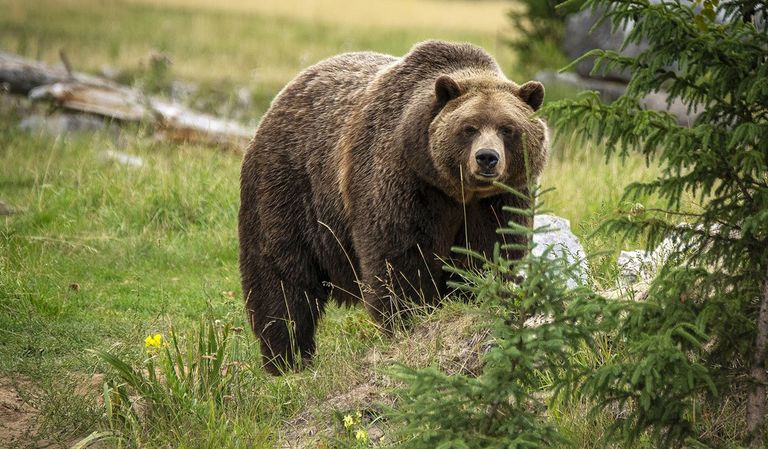
This leads to a myriad of discussions and debates, especially among residents of bear-inhabited regions. Whether the opponent is a formidable grizzly or a relatively gentler black bear, understanding their nuances and equipping oneself adequately remains the cornerstone of safety."